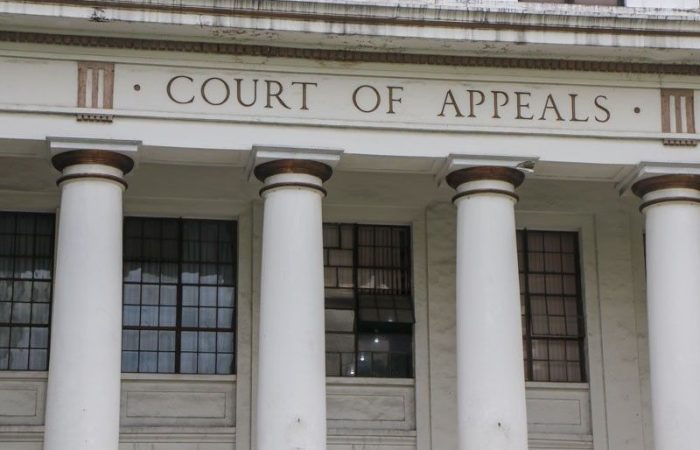By Susann Nordvik
Although the benefits of incorporation include shareholder immunity from suit in most cases, what happens when someone uses their business’s corporate status as a sword to commit fraud, rather than a shield to avoid contractual liability?
Generally speaking, the law in the United States strongly favors the separate legal person status provided by the corporate form, and this concept intersects with many aspects of the law, including taxation, public reporting requirements, and contractual obligations. However, the versatility of the corporate form has often provided a safe harbor for those seeking to insulate themselves from liability for a personal obligation, to commit an injustice, or to gain unfair advantage in their field. Consequently, the law has evolved to provide a means to “pierce the veil” of the corporate entity status and reach the individuals who are utilizing the company to obtain such ill-gotten gains.
Nevertheless, as is often the case with judicially created remedies, the Commonwealth has applied standards “for veil piercing [that] are very stringent, and piercing is an extraordinary measure that is permitted only in the most egregious circumstances . . . .”[1] As a consequence, it must be noted that not every circumstance is a good fit for a veil piercing theory. Rather, the evidence supporting the theory must be clear, thorough, and convincing as possible. This requirement is also shown in the appellate standard applied to the review of orders to pierce the corporate veil, which is the de novo standard, where no deference is given to the ruling of the lower court.[2]
The stringency applied to the remedy is predicated on the “vital economic policy underlying the whole corporate concept” of the legal entity status of the corporation.[3] In other words, if the veil were pierced flippantly, it would jeopardize the underlying purpose of establishing shareholder immunity in the first instance. “Therefore, a decision to refuse to recognize this immunity constitutes ‘an extraordinary exception’ to be permitted only when it becomes necessary to promote justice.”[4]
The determination to pierce the corporate veil is made on a case-by-case basis in consideration of the specific facts of the case, and “no single rule or criterion . . . can be applied to determine whether piercing the corporate veil is justified.”[5] Therefore, the corporate veil will only be pierced if “the shareholder sought to be held personally liable has controlled or used the corporation to evade a personal obligation, to perpetrate a fraud or a crime, to commit an injustice, or to gain an unfair advantage. . . . Piercing the corporate veil is justified when the unity of interest and ownership is such that the separate personalities of the corporation and the individual no longer exist and to adhere to that separateness would work an injustice.”[6]
The burden of the plaintiff in such a situation is to show that the corporate entity “was the alter ego, alias, stooge, or dummy of the individuals sought to be charged personally and that the corporation was a device or sham used to disguise wrongs, obscure fraud, or conceal crime.”[7]
To meet this burden, the factual conditions include situations where there was commingling of funds, that corporate assets were siphoned into individual accounts, that corporate formalities were not followed, that the business of the entity was not separate from the individual shareholders, or that the organization of the entity did not have a separate legitimate purpose, such as tax advantage.[8] Undercapitalization, the failure to initially capitalize the corporation sufficiently to conduct normal business operations and pay creditors, appears to be a factor in determining part of the initial purpose of the entity, as well as the question of whether or not an injustice would occur if the veil is not pierced.
However, although undercapitalizing the company in the first instance “can be an indicator of whether a corporation was created and operated as a sham or as the alter ego for another corporation or person,”[9] this has been generally limited to circumstances where the company, “from its inception, . . . is unable to pay its costs of doing business.”[10] In order to make this rather rigorous showing, a challenger must not only establish that the corporation was unable to pay their debts when they came due (thus insolvent), but also present evidence wo what level of capitalization would be necessary for the company to carry out its business under its specific circumstances and business model.
But the question of undercapitalization does not merely go to the issue of the original purpose of the corporation, i.e., whether it was intended to be a “stooge,” a “sham,” or an alter ego of one or more of the shareholders, but also to the issue of whether piercing the veil is necessary to avoid injustice. “One of the principal factors we look to in resolving the issue of piercing the veil of a corporation, and pertinent here, is whether the inability of the corporation to satisfy the judgment against it is the result of the deliberate undercapitalization by the incorporating stockholders.”[11]
On balance, the cases show that the courts tend to permit veil piercing only in the most egregious of circumstances, and the evidence must be both thorough, and carefully curated to present a case that reflects not only a nefarious purpose in the inception of the corporation, but a complete lack of separateness, and a showing of either gross undercapitalization or looting by the stockholders, which would prevent any judgment from being collected.
Although it is possible to meet such an evidentiary burden, this remedy is not likely to be available often. This is because in many cases corporate shareholders or LLC members may intend to do business in the beginning, but circumstances arise that change the situation. Therefore, in cases that involve a business that was already a going concern at the time the claims arose, it may be a more successful strategy to consider successor liability or unwinding fraudulent transfers in the appropriate cases where there is no other indicia of personal liability through independent tort.
If you have potential claims against what you believe is a sham, or undercapitalized company, please reach out to one of the qualified litigation attorneys at Steven Krieger Law and we’d be happy to provide guidance in this detailed area of the law.
[1] CF Trust, Inc. v. First Flight LP, 580 S.E. 2d 806, 811 (Va. 2003) (applying veil piercing to limited partnership); see also Cheatle v. Rudd’s Swimming Pool Supply Co., Inc, 360 S.E.2d 828, 831 (Va. 1987).
[2] Dana v. 313 Freemason, 587 S.E.2d 548, 553 (Va. 2003).
[3] Cheatle, 360 S.E.2d at 831.
[4] Id. (quoting Beale v. Kappa Alpha Order, 64 S.E.2d 789, 797 (Va. 1951)).
[5] O’Hazza v. Executive Credit Corp., 431 S.E.2d 318, 320 (Va. 1993).
[6] Greenberg v. Commonwealth, 499 S.E.2d 266, 272 (Va. 1998) (quoting O’Hazza, 431 S.E.2d at 320-21).
[7] Cheatle, 360 S.E.2d at 831 (citing Lewis Trucking Corp. v. Commonwealth, 147 S.E.2d 747, 753 (Va. 1966).
[8] It should be noted that the Cheatle Court appears to suggest that piercing the corporate veil is somewhat more onerous than establishing independent liability for fraud by the shareholders in question. 360 S.E.2d at 832.
[9] O’Hazza v. Executive Credit Corp., 431 S.E.2d 318, 321 (Va. 1993).
[10] Id.
[11] Dana, 587 S.E.2d at 554.



